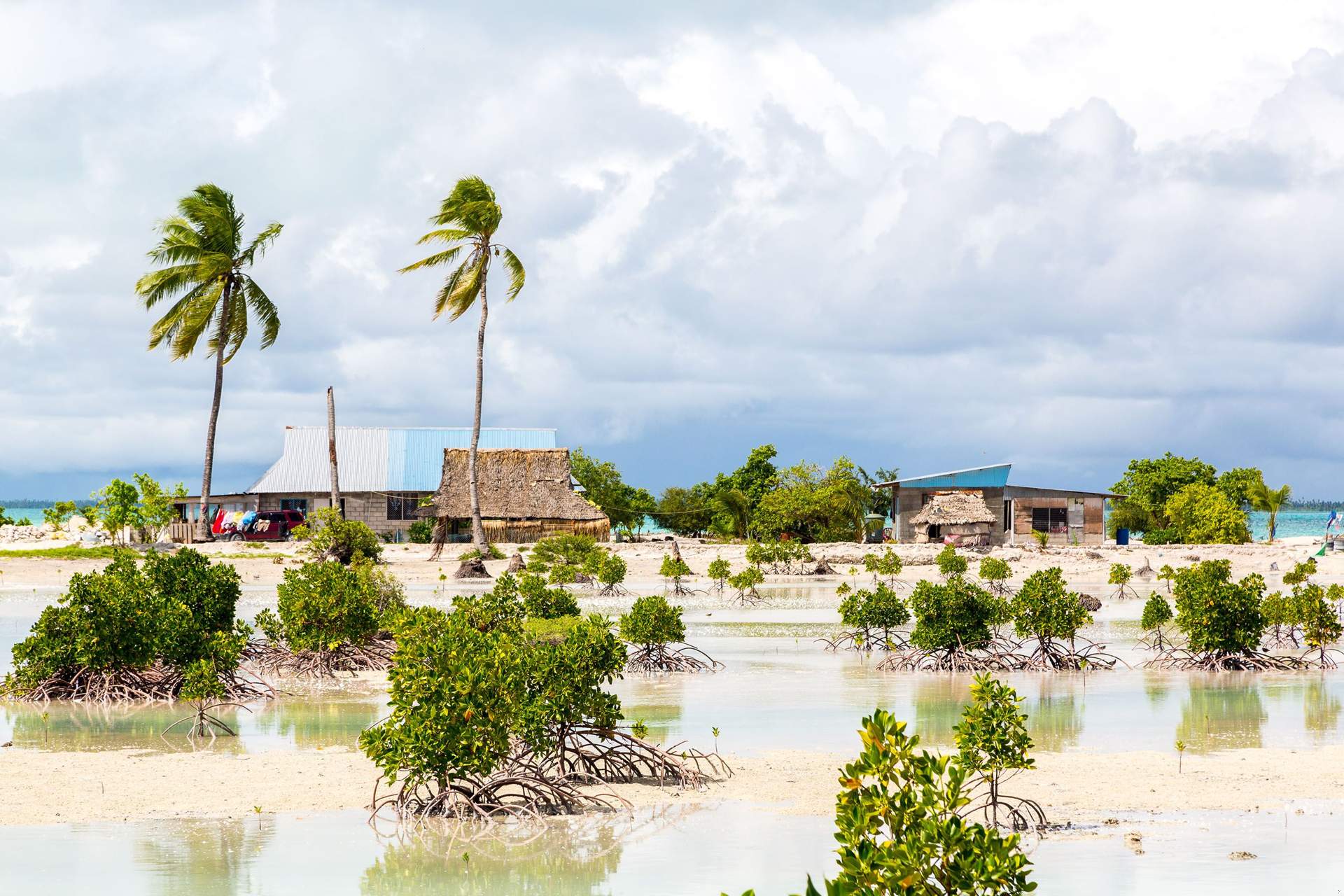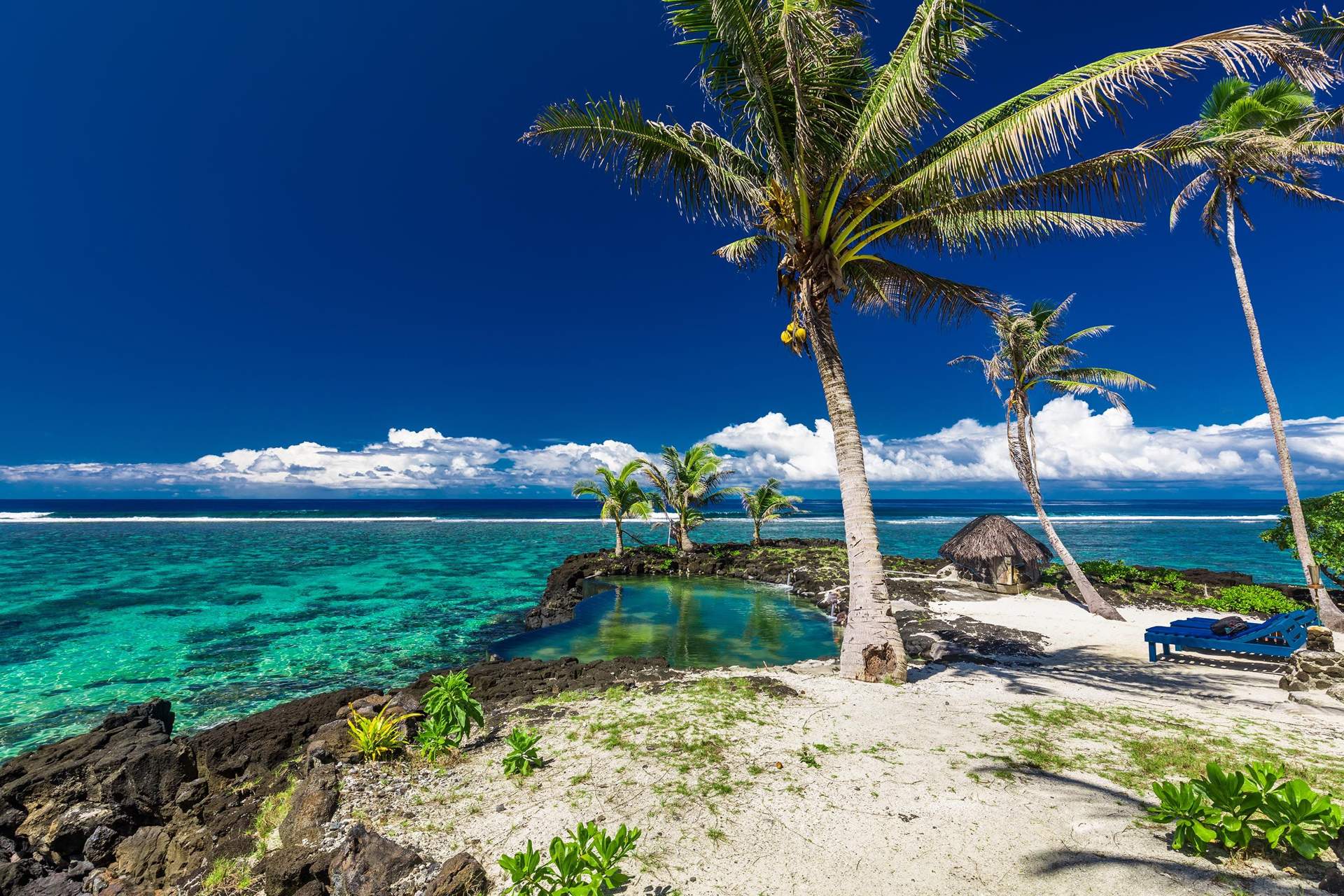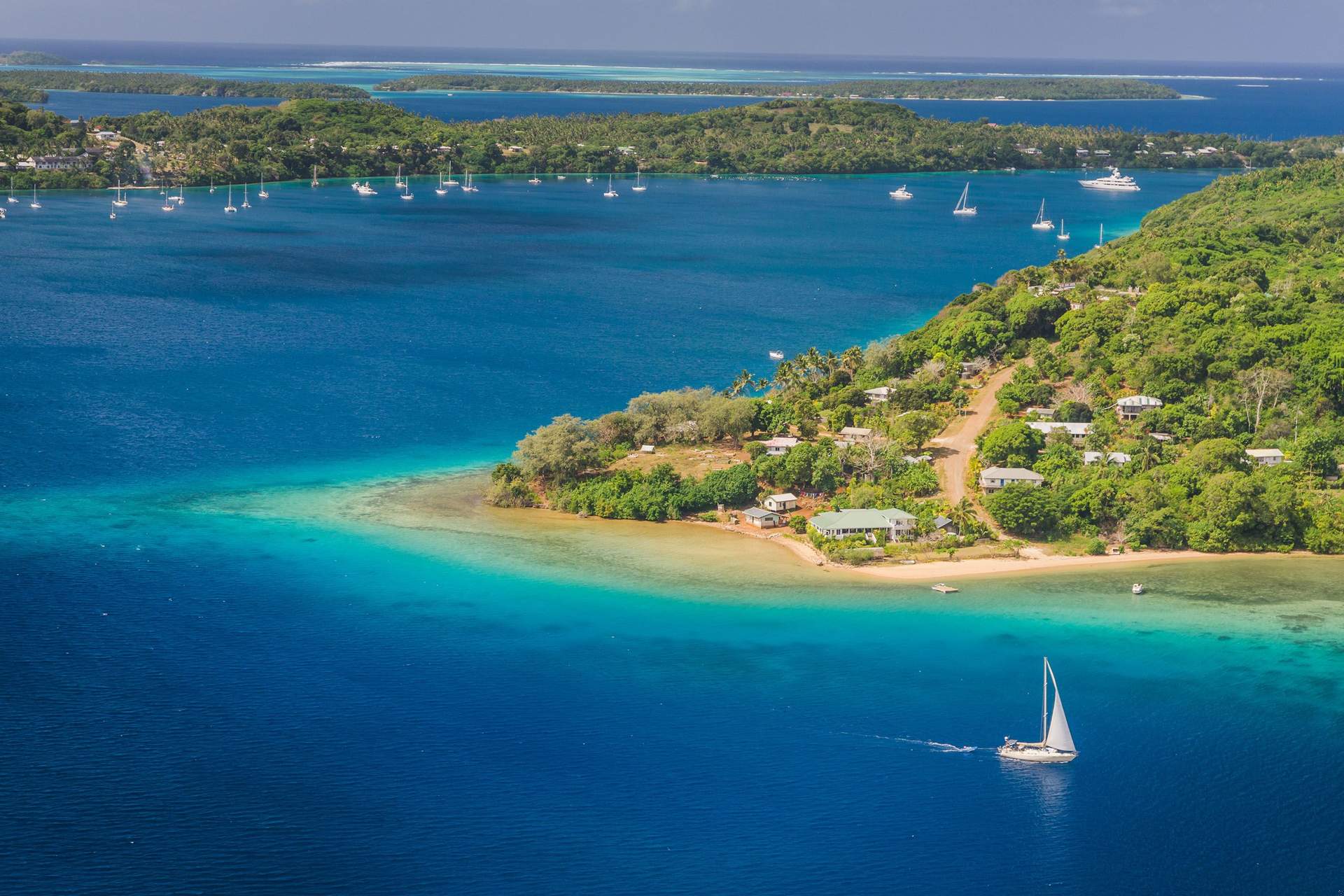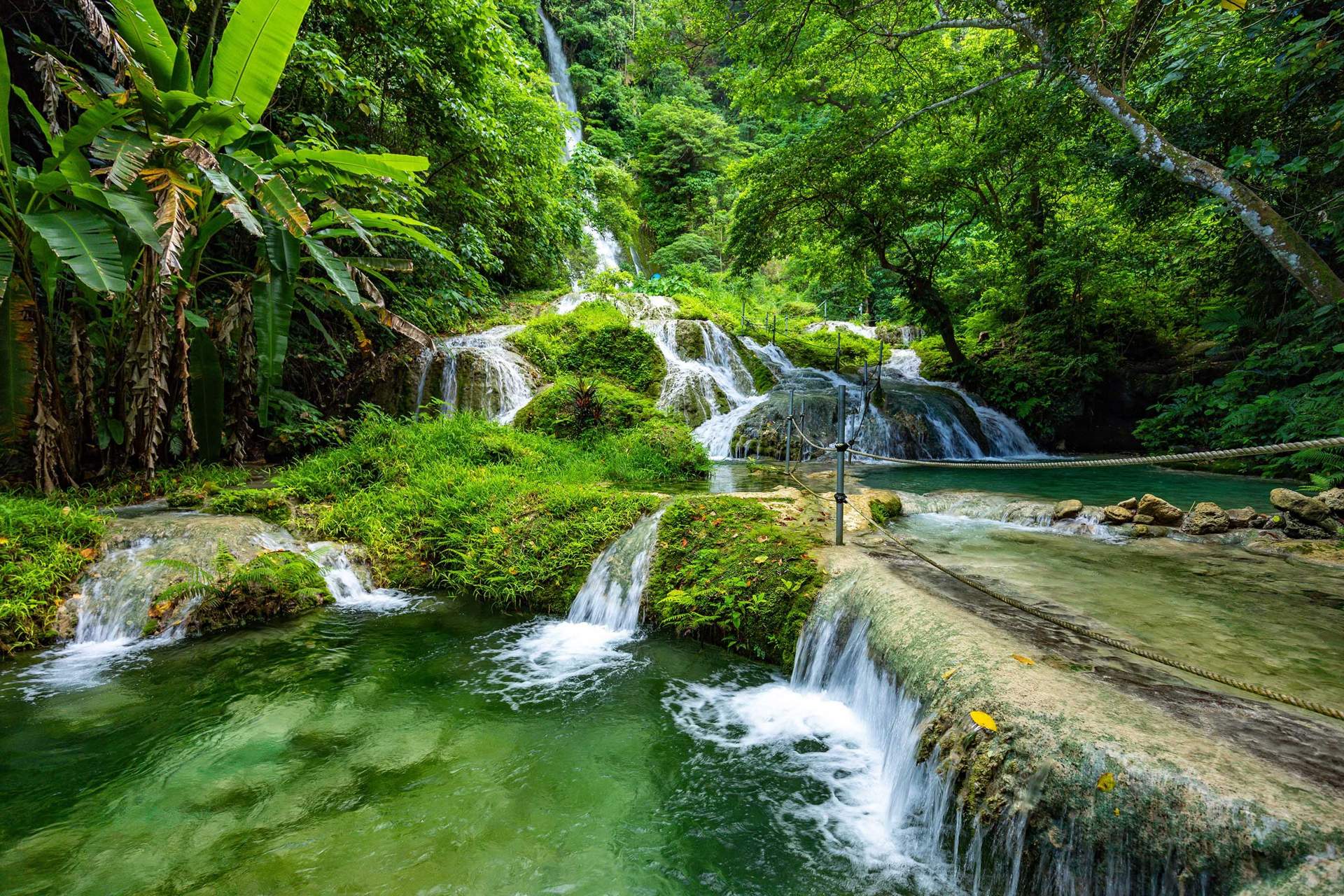1. Easter Island moai, Chile
On a remote South Pacific island, 3,500km west of Chile, stand some of the world’s most curious man-hewn monoliths – the moai of Easter Island. With large, broad noses and strong chins, these iconic heads weigh up to 80 tonnes and stand up to 10m high.
So just who constructed these mystifying monuments? And how did they do it? These questions have flummoxed archaeologists and scientists since Europeans first visited the island in 1722. Recent analysis indicates that settlers, most likely Polynesians, arrived on Easter Island around AD400 to 700, and began making moai in around AD1100. The 1,000 statues that cover the island were probably built to emulate tribal leaders and other important figures, although their elongated faces have raised whisperings of alien interventions. Swiss novelist Erich von Däniken suggested that they were the work of extraterrestrials, who accidentally landed on the island and had nothing much to do.
How the moai were transported from the island’s quarries to their ceremonial platforms has also been investigated. One idea is that they were ‘walked’ using ropes – a method that would have taken 18 people two weeks to complete.
Get there: Easter Island is a 5.5 hour flight from Santiago.
Like that? Try this… Lore Lindu National Park, Indonesia – this forest on Sulawesi is dotted with 400 mysterious granite megaliths, many in human form.
2. Gobi rock art, Mongolia
What are those doodles in the desert?
The Gobi Desert is unusual in itself: the largest in Asia, it’s a vast spread of largely duneless, dry, bare rock, where sands sing, cliffs flame and dinosaur fossils abound. In the Southern Gobi, in Havsgait Valley, there are more strange finds. Preserved at the top of a mountain is a gallery of petroglyphs, which offer a glimmer of insight into the people who lived here during the Bronze Age. There are simple drawings of fish, deer and horses, and the hunting scenes so familiar in other ancient rock art around the world.
But, among them are also some rather stranger scribbles: are they humanoid? Or aliens? No one really knows.
Get there: Flights from Ulaanbaatar to Dalanzadgad, the capital of South Gobi province, take 90 minutes. The petroglyphs are around a 2.5-hour drive from Dalanzadgad.
Like that? Try this… Gilf Kebir, Egypt – in the driest Sahara, a remote cave is plastered with petroglyphs of people swimming (made famous in The English Patient).
3. Loch Ness monster, Scotland
Does a dinosaur really lurk in the lake?
Haunting the deep, murky waters of Loch Ness, the Loch Ness monster is one of the most publicised creatures of modern times.
Nessie’s origins date back to the seventh century, when a monk named St Columba allegedly commanded a water beast that had previously killed a man. The modern fascination exploded in 1934, when a grainy black-and-white photo of Nessie’s head and neck was published in the Daily Mail. Although later revealed as a hoax, interest in the monster thrives today.
Thousands of tourists, locals and scientists claim to have seen Nessie. She is often compared to a Plesiosaurus – a fish-eating reptile thought to have died out at the end of the Cretaceous period. Those who report sightings also mention seeing the water bubbling and swirling – a phenomenon that, in July 2013, an Italian geologist attributed to the loch sitting on a fault line.
The mystery (and associated tourist trade) rumbles on. And, as Loch Ness is up to 230m deep and contains more water than all the other lakes in England and Wales combined, who knows what really lurks beneath…
Get there: Loch Ness is 34km from Inverness airport. Local buses connect to villages by the loch. Boat trips leave from Drumnadrochit.
Like that? Try this… Chessie, Maryland, USA – America’s own Nessie allegedly inhabits Chesapeake Bay.
4. Stone spheres, Costa Rica
Pointless pieces of rock?
Remember the opening scenes of Raiders of the Lost Ark? The bit with Harrison Ford escaping the huge stone ball? You might have thought it was a figure of Steven Spielberg’s imagination, but that runaway rock was in fact based on the man-made spheres of the Diquís Delta, on Costa Rica’s southern Pacific coast. There are around 300 of these stone orbs, and they’re possibly the most puzzling of the world’s similar structures as they seem to serve absolutely no purpose. Despite in-depth archaeological research, the meaning of the spheres, which range in diameter from a few centimetres to over two metres, still remains a secret. It’s thought they were created around AD600, most likely by reducing round boulders to a spherical shape through a combination of controlled fracture, pecking and grinding.
The stones were only discovered in the 1930s by workers who were clearing the land for a plantation. Today, most of the spheres have been moved from their original location: some stand outside Costa Rica’s National Museum in San José; others were sadly blown up by treasure hunters.
Get there: Fly UK-San José via a US or European hub. The stones are scattered; some tours from Costa Ballena, reachable by bus from San José, visit stones that remain in the delta.
5. Eye of the Sahara, Mauritania
Looking at this formation in the Mauritanian desert is like peering into a human eye – swirls of graphite-blue curl round a central ‘pupil’, while smaller lines snake around like the complex pattern of an iris; however, at almost 50km across, the gigantic Eye of the Sahara is around two million times bigger.
Discovered by early astronauts who used it as a landmark, the Richat Structure (as it’s also known) was initially thought to be the result of a meteorite impact because of its perfect circularity. Further studies postulated that it was a volcanic crater; most recently investigations suggest the Eye is the result of erosion. However, the cause of its symmetry is still not clear.
An alternative notion is that the Eye is actually the Lost City of Atlantis, buried under the sands of the Sahara. Maybe… In his 1969 book, The Mystery of Atlantis, author Charles Berlitz wrote: ‘Other intriguing theories suggest that Atlantis never sank at all – that it is still on dry land and all we have to do is dig for it.’
Get there: The Eye is 40km north-east of Ouadâne. Book 4WD tours in nearby Atâr. Note, the Foreign Office currently advises against travel to this area.
Like that? Try this… Spotted Lake, British Columbia – this Canadian lake also looks odd from the air: in the summer it dries up into splodges of different colours, a result of high mineral concentrations.
6. Pyramids of Giza, Egypt
Built to survive an eternity – and so far carrying out their purpose – the three pyramids of Giza were built between 2550 and 2490BC by pharaohs Khufu, Khafre and Menkaure. The biggest of the three, the Great Pyramid, is 147m tall and is comprised of 2.3 million blocks of stone, all cut with outstanding precision. It is widely agreed that the pyramids were intended as burial chambers, brimful of the spoils needed for the afterlife. Years of archaeological excavation and modern robotic investigations have revealed a beautiful editorial of Egyptian life inside the sandy walls, rich in detail and overflowing with artefacts. Some theories also suggest that the pyramids were built to mimic Orion’s Belt.
Although scholars have agreed on their purpose, they’re still stumped as to how they were built. The cornerstone foundations have a ball-and-socket construction, which allows for heat expansion and earthquakes, and the angles on the sides of all three pyramids are near perfect. This indicates the use of building techniques that far surpass what would be expected of an ancient civilisation.
Get there: Cairo is a 5.5 hour flight from the UK. Giza is to the west of the capital, accessible by bus and taxi.
7. Sailing Stones, USA
How do these inanimate objects move?
Deep in the heart of California’s Death Valley, on the cracked lakebed of Racetrack Playa, around 150 stones slide across the surface by themselves, leaving tracks like aeroplane contrails. But what is causing the rocks to glide? Theories for their movement range from strong prevailing winds to magnetic force fields and alien intervention (the secretive Area 51 lies just across the state line in Nevada).
A recent study by a NASA geologist concluded that the movement is caused by ice forming around the rocks in winter, which then thaws, leaving the rocks ‘floating’ on mud, and making them easily blown by winds. Sceptics argue that the winds would still have to be extremely strong to shift the stones – some of which weigh up to 320kg. One thing that makes the stones all the more strange is that no one has ever actually seen them move.
Get there: Death Valley National Park is around 230km from Las Vegas. Racetrack Playa is 130km from Furnace Creek Visitor Center. No public transport runs to the park.
Like that? Try this… Logan stones, Dartmoor – amid Devon’s granite tors are several logan stones, heavy lumps so perfectly balanced that they can be rocked by the slightest touch.
8. Lost City of Ubar, Oman
Atlantis of the Sands unearthed?
In 1,001 Arabian Nights, it’s said that “anyone who tries to find the road to Ubar will go crazy”. And, indeed, the ‘Atlantis of the Sands’ has baffled researchers for centuries. According to legend, the city was built 5,000 years ago. It was a successful frankincense trading hub; however, its great wealth was also its downfall – Ubar’s rulers became greedy and its citizens so wicked that God destroyed the city, allowing the desert to swallow it up.
In 1983 documentary-maker Nicholas Clapp began using NASA data to try to locate the lost city. In 1992, after years of searching, Clapp and his team believed they’d found Ubar. They deciphered ancient trade routes and road junctions, and announced that there was truth behind the legend: the mythical kingdom had fallen into the belly of the western Omani desert at Shisr.
Not everyone concurs, but there’s a small museum at the site, displaying some of the discoveries made there.
Get there: Shisr is signed off the Muscat-Salalah road, about a two hour drive from Salalah.
9. Socotra, Yemen
The world’s weirdest plants?
Bleeding forests, alien landscapes, surreal trees – it reads like the backdrop for a Tolkien story. But 380km off the southern coast of Yemen lies an island so unfathomable that even a fantasy novel doesn’t compare. Measuring 130km long and 50km wide, Socotra is a jewel of biodiversity, with over 300 endemic plant species. Despite its harsh, hot, dry climate, the most extraordinary plant and animal life continues to grow there.
Of all Socotra’s unusual flora, most striking are the mushroom-shaped dragon’s blood trees, which poke umbrella-like out of the dusty ground. Found nowhere else on earth, and estimated to live for over 800 years, the trees ‘bleed’ a dark red resin when cut. This is collected and ground up for a variety of medicinal and cosmetic uses.
According to legend, the trees originated from the blood shed during a battle between an elephant and a dragon. But then, Socotra is rich in such myths; Ancient Greek historian Herodotus said the island was where the Phoenix came to be reborn twice every 1,000 years.
Get there: Flights connect Socotra to Yemeni capital Sana’a (around 2.5 hours). Note, the Foreign Office currently advises against all travel to the country.
Like that? Try this… Madagascar – the Indian Ocean isle is home to bulbous baobabs and species found nowhere else, that got here who-knows-how.
10. Marfa ghost lights, USA
What are these odd orbs over the desert?
The basketball-sized, reddish glowing orbs that flicker in the night sky above western Texas have long courted controversy. They appear on Mitchell Flat, 16km east of Marfa, and divide, merge and change colour in a most unusual fashion. Sceptics have discounted the paranormal theories behind the lights, crediting them instead to reflections of vehicle headlamps. However, some argue that this doesn’t tally with their early documentation – at a time when headlamps didn’t exist. The first account of the lights appeared in 1883. Robert Ellison, a cattle herder, spotted them after his cows became spooked. He investigated the orbs on horseback, but to no avail. Despite numerous scientific attempts to solve the mystery, no solid conclusion has ever been reached.
Get there: Marfa is on a plateau of the Chihuahuan Desert, accessible via Highway 90. The nearest airport is El Paso, 305km west. There is a specially constructed lights viewing-platform at Mitchell Flats.
Like that? Try this… Brown Mountain Lights, North Carolina – similar phenomena.
11. Pulemelei, Samoa
Who built Polynesia’s mighty mound?
The largest and oldest man-made structure in Polynesia, Pulemelei rises 12m up amid the jungle of Samoa’s Savai’i island. Estimated to be around 1,000 years old, the pyramid-like structure is largely obscured by wildly growing vegetation, almost swallowed – along with its secrets – by the jungle.
There have been few studies of the mound, although archaeologists have discovered that the complex contains walkways, smaller mounds and stone-lined earth umus (ovens) similar to other ceremonial temples found in the region. Despite attempts to pinpoint who built Pulemelei and why, no firm conclusion has been reached. A local legend states that the mound was the residence of gods and spirits who were called back each night by the sound of a shell trumpet. Fragments of such a trumpet were found beneath stones on the upper platform during the clearing of the mound in 1965.
Get there: Flights from New Zealand, Australia and LA land on Upolu island. Ferries link Upolu and Savai’i. There is no public transport to Pulemelei; hire a car.
12. Yeti, Himalaya
Does the abominable snowman exist?
High up in the Himalaya, one of the most famous mythological creatures is said to roam. Supposedly ape-like in stature, over 2m tall, with yellow skin and matted hair, the yeti only caught Western attention in the early 1920s when intrepid climbers raced to conquer Everest.
The name ‘abominable snowman’ was coined in 1921 when Charles Howard-Bury, leading a Mount Everest expedition, saw large tracks in the snow, which his sherpa described as belonging to the metch kangmi – ‘filthy snowman’. It was mistranslated by the press – possibly for dramatic effect.
Since then there have been thousands of reported sightings of the man-beast – even as recently as this February, when three boys filmed a shadowy object moving behind the trees in western Siberia. Also, a purported yeti scalp is on display at Khumjung Monastery, eastern Nepal. However, scientists put suspected encounters down to misidentification of large mammals.
Get there: Khumjung is near Namche Bazaar, on the Everest Base Camp trek. Namche is a two-day walk from Lukla, where flights connect to Kathmandu (30mins).
Like that? Try this… North America where Bigfoot – a similar beast – is said to roam.
13. Standing stones, Laos
The Stonehenge of South-East Asia?
While many people have heard of Laos’ Plain of Jars, in Xieng Khouang province, there’s an equally cryptic site in neighbouring Hua Phan. Protruding from the ground like giant sets of jagged teeth, the standing stones of Hintang Archaeological Park are scattered across 72 different locations in the remote, mountainous jungle.
French archaeologist Madeleine Colani first documented the 1,546 stones – likened to England’s Stonehenge – in the 1930s. They are believed to be around 1,500 years old, and scientists think they were created by the ancestors of those behind the Plain of Jars: the stone used is the same and, among the upright rocks, there are 153 large stone discs, which scientists have likened to the lids at the Plain.
Although the stones’ meaning remains unexplained, archaeologists believe the discs were used as grave markers. Local animists have a different explanation, however: they think the discs once stood on top of the menhirs to form dining tables for a sky-spirit named Jahn Hahn.
Get there: Hua Phan is in north-east Laos. There are regular flights from Vientiane to Xam Neua, the province capital. Xam Neua-Luang Prabang by bus takes 15 hours. Hintang is 36km west of Xam Neua.
Like that? Try this… Carnac, France – one of the world’s most extensive menhir sites: around 10,000 standing stones dot the Brittany countryside.
14. San Agustín statues, Colombia
Who, why and where did they go?
The San Agustín Archaeological Park in south-west Colombia contains the largest group of religious monuments and megalithic structures in South America. Extending over 2,000 sq km, the park features an array of rock animals, warriors and human faces, some glowering menacingly, others with inane grins. The estimated 500 statues were carved out of volcanic rock sometime between AD100 and 1200 by a pre-Hispanic society, about which very little is known: they simply vanished without a trace, leaving no clues as to the meaning of the statues or why they disappeared.
Archaeologists believe the statues are likely related to funerary rights and act as grave-makers to watch over the dead. However, various theories abound. The first description of San Agustín was recorded in 1757 in the book Wonder of Nature by Friar Juan de Santa Gertrudis; the friar was convinced that the devil had carved the statues to warn the natives that the Spanish missionaries would be coming.
The most famous statues include The Double Self, a warrior with two bodies and one head, and El Partero (the male midwife), which depicts a figure delivering a child. Some studies suggest that the statues bear a resemblance to those of the Olmecs – an ancient nomadic people from Mexico that could have travelled to Colombia.
Get there: San Agustín is 400km south-west of the capital Bogotá; bus journeys take around 10 hours. Flights connect Bogotá and Nevia, three hours from San Agustín. San Agustín Archaeological Park is 3km from San Agustín, and is best explored on horseback.
Like that? Try this… San Lorenzo Tenochtitlán, Mexico – visit the allegedly similar Olmec heads, some of which are up to 3m high.
15. Moeraki Boulders, New Zealand
Along South Island’s North Otago coast sits a panoply of prehistoric dinosaur eggs. Or are they the petrified spoils of an ancient Maori tribe? Many myths and legends surround the large, spherical Moeraki Boulders that lie scattered like an enormous game of marbles along Koekohe Beach.
Scientists reckon they’re calcite concretions formed on the seafloor 65 million years ago. However, Maori legend states that the boulders are the petrified wreckage from Araiteuru, a large waka (canoe) that became waterlogged on a journey to Hawaiki; some of its baskets and water calabashes washed ashore and became these boulders. The Araiteuru itself was wrecked off Shag Point, where a reef is said to be its preserved hull.
The boulders, which are up to 3m in diameter and several tonnes in weight, are best seen when the tide is low.
Get there: The boulders are accessible from State Highway 1, 75km north of Dunedin, 40km south of Oamaru.
16. Tasmanian tiger, Australia
The fabled Tasmanian tiger was long (around 180cm, nose to tail) and sleek, with the dark stripes of a tiger and the body of a dog. The last captive tiger (or thylacine) died in Hobart Zoo in 1936; the species was deemed officially extinct in 1986.
Despite this, rumoured sightings of the coyote-like creature continue to emerge, fuelling suspicion that it still roams the island’s ancient forests.
Originally it was found in three regions: mainland Australia, Tasmania and New Guinea. The tiger was particularly important to the indigenous people of Australia and appeared in rock art around 6,000 years ago. However, the arrival of European settlers in the early 1800s led to the tigers’ demise as hunting became rife.
Interest in the Tasmanian tiger is still burning – in 2005, Australian magazine The Bulletin reported that there had been around 4,000 unconfirmed sightings since 1936 and offered A$1.25 million for proof that the tiger still existed.
Get there: Tasmania is around a 30 hour flight from the UK, depending on stopovers.
Like that? Try this… UK – since the Dangerous Wild Animals Act of 1976 made it illegal to keep untamed pets, there have been reports of big cats roaming the countryside; britishbigcats.org catalogues sighting.
17. Lourdes, France
On 11 February 1858, in the small market town of Lourdes, a poor 14-year-old girl named Bernadette Soubirous had the first of 18 visions of the Virgin Mary. Over the next five months, those desperate to catch a glimpse of the apparition themselves flocked here – particularly after Bernadette discovered a magical spring, the waters of which seemed to possess healing properties.
Fast-forward 155 years and over 200 million people have visited the town, nestled in the foothills of the Pyrenees, making it the top pilgrimage site in the world. During pilgrimage season (Easter-October) around 25,000 souls visit the site each day. Legend has it that anyone who goes to the healing grotto can be brought back from the brink of death. To date there have been 69 miracles recognised by the Lourdes International Medical Committee (CMIL); these include recovery from blindness, paralysis and bone disease.
The most recent was confirmed in June this year by CMIL: it certified that the cure of Danila Castelli from severe hypertension after her visit in 1989 ‘remains unexplained according to current scientific knowledge’.
Get there: Lourdes has an airport (Tarbes- Lourdes, 12km). Pau airport is 40km away, and buses connect to Lourdes (75mins). Lourdes also has a train station; there are direct TGV services from Paris (6hrs).
Like that? Try this… Fátima, Portugal – since the Marian apparitions of 1917, Christian pilgrims have flocked to this town, 123km north of Lisbon.
18. Angkor Wat, Cambodia
How did they shift all that stone?
Deep in the jungle of north-west Cambodia sits one of the largest religious monuments ever created – Angkor Wat. Built in the 12th century by the Khmer Empire, this imposing 2 sq km complex, constructed from around five million tons of sandstone, was somehow built in just a few decades.
How they transported the bricks (from a quarry 50km away) and how they then constructed the temple – with its five towers soaring up to 65m high and 200m-wide moat – is also baffling. The scale of the achievement has prompted some to speculate that either gods or extra-terrestrials must have lent a helping hand in its creation.
Get there: Angkor Wat is 6km north of Siem Reap – take a tuk-tuk or hire a bike. Siem Reap is served by flights from Bangkok and Phnom Penh.
Like that? Try this… Teotihuacan, Mexico – 50km north-east of Mexico City and completed in around 100 BC, it was the largest city in the pre-Columbian Americas with a 224m central pyramid, yet no one knows who built it or why they disappeared.
































 South Pacific itineraries
South Pacific itineraries 2. The western Polynesian triangle: where Pacific island traditions endure
2. The western Polynesian triangle: where Pacific island traditions endure 3. The Melanesian crescent: relics & wrecks
3. The Melanesian crescent: relics & wrecks 4. The coral route: paradise at its best
4. The coral route: paradise at its best